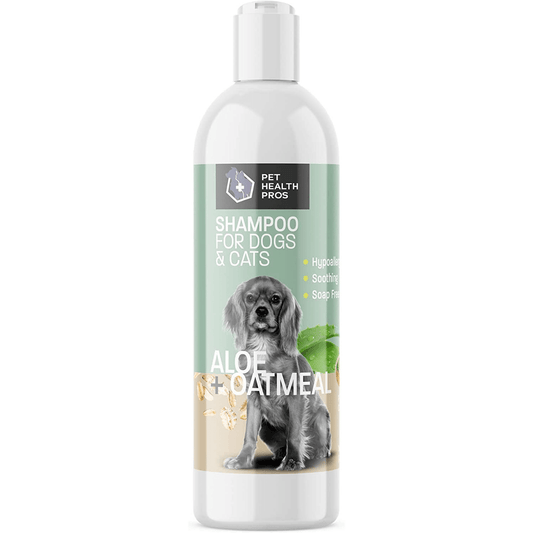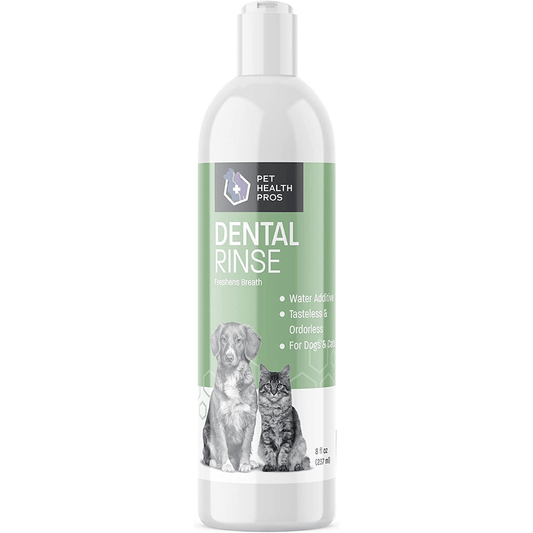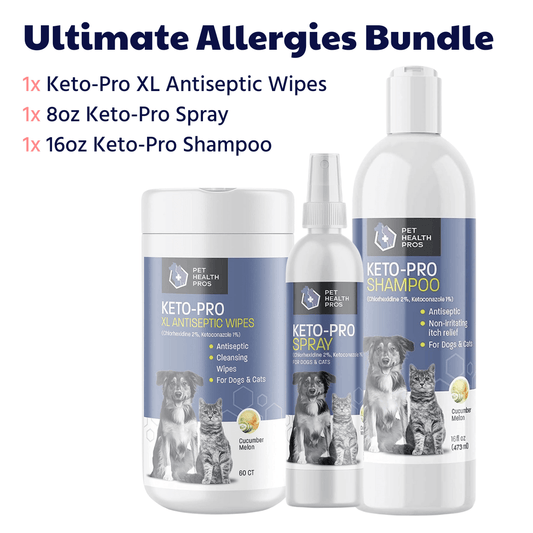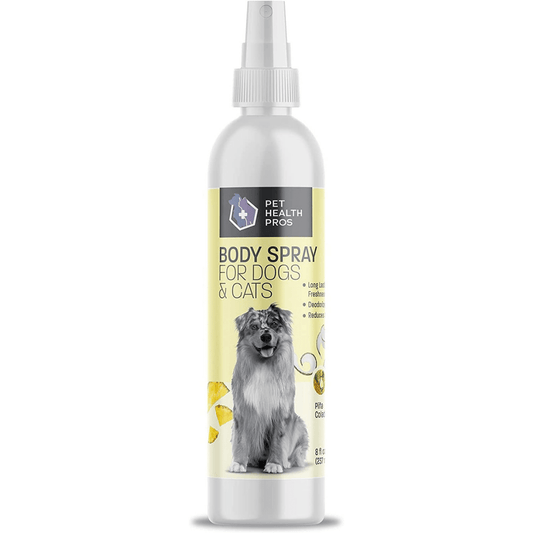Yeast infections in dogs' ears can be uncomfortable and irritating for your beloved pet. Understanding how to identify, treat, and prevent these infections is crucial for maintaining your dog's ear health. This article will guide you through the process of managing yeast infections in dogs' ears, from initial identification to long-term prevention strategies.
Key Takeaways
- Recognizing the signs of yeast infections in dogs' ears is the first step towards treatment. Symptoms include redness, itching, and a distinct odor.
- Veterinary examination and laboratory tests are essential for accurately diagnosing yeast infections and ruling out other conditions.
- Treatment options vary from medicated ear drops and ointments to oral medications, with natural remedies also playing a supportive role.
- Preventive measures such as routine ear cleaning, dietary adjustments, and environmental changes can significantly reduce the risk of yeast infections.
- In cases of recurrent infections, understanding the underlying causes and consulting with a veterinarian for long-term management strategies is key.
Understanding Yeast Infections in Dogs' Ears
Identifying the Symptoms
Identifying the early signs of a yeast infection in your dog's ears is crucial for timely treatment and recovery. The most common symptoms include excessive scratching of the ears, head shaking, and a noticeable odor. Additionally, you might observe redness, swelling, and a brown or yellow discharge. These symptoms can cause significant discomfort for your pet, leading to more severe complications if left untreated.
- Excessive scratching of the ears
- Head shaking
- Noticeable odor
- Redness and swelling
- Brown or yellow discharge
It's important to note that while these symptoms can indicate a yeast infection, they can also be signs of other ear problems. Therefore, a proper veterinary diagnosis is essential to ensure the correct treatment plan.
Early detection and understanding of these symptoms can significantly improve the outcome for your dog. If you notice any of these signs, it's advisable to consult your veterinarian for a thorough examination. Remember, treating a yeast infection in its early stages can prevent more serious health issues and ensure your dog's comfort and well-being.
Common Causes and Risk Factors
Yeast infections in dogs' ears can often be traced back to a combination of environmental factors, underlying health issues, and lifestyle habits. Moisture is a key factor in the development of yeast infections, as it creates an ideal environment for yeast to grow. Dogs that swim frequently or live in humid climates are at a higher risk. Additionally, dogs with floppy ears are more susceptible due to reduced air circulation within the ear canal.
- Allergies to food or environmental triggers can weaken the immune system and predispose dogs to yeast infections.
- Hormonal imbalances, such as those seen in dogs with hypothyroidism, can also contribute to the development of yeast infections.
- Use of antibiotics or steroids can disrupt the natural balance of microorganisms in the ears, leading to overgrowth of yeast.
Note: It's important to address the underlying causes of yeast infections to prevent recurrence.
Diagnosing Yeast Infections in Canine Ears
The Role of Veterinary Examination
A thorough veterinary examination is the cornerstone of diagnosing yeast infections in dogs' ears. Veterinarians are skilled in identifying the subtle signs of ear yeast infections, which may not be immediately apparent to pet owners. During the examination, the vet will inspect the ear canal visually, looking for signs of inflammation, discharge, and odor, which are indicative of a yeast infection.
A detailed history of the dog's health and behavior is crucial in diagnosing ear yeast infections.
Following the initial visual inspection, the veterinarian may perform additional diagnostic tests to confirm the presence of yeast. These tests can include:
- Microscopic examination of ear discharge
- Culture tests to identify the specific type of yeast
- Allergy testing to rule out other causes of ear problems
Identifying the exact cause of the ear infection is essential for selecting the most effective treatment plan. Without a proper veterinary examination, treating a yeast infection in a dog's ear can be challenging and may lead to further complications.
Utilizing Laboratory Tests for Confirmation
After a thorough veterinary examination, laboratory tests play a crucial role in confirming a yeast infection in a dog's ears. These tests are essential for identifying the specific type of yeast and determining the most effective treatment plan. Common laboratory tests include:
- Microscopic examination of ear discharge
- Culture tests to identify the yeast species
- Sensitivity tests to determine the best medication
It's important to accurately diagnose the type of yeast infection, as treatment can vary significantly based on the yeast species.
Laboratory tests not only confirm the presence of a yeast infection but also help in monitoring the effectiveness of the treatment. By utilizing these tests, veterinarians can tailor a treatment plan that is most likely to result in a successful outcome for the dog. Remember, timely and accurate diagnosis is key to managing yeast infections effectively.
Treatment Options for Yeast Infections in Dogs' Ears
Medicated Ear Drops and Ointments
Medicated ear drops and ointments are a cornerstone in the treatment of yeast infections in dogs' ears. These medications are specifically formulated to combat the fungal organisms responsible for the infection, providing relief and promoting healing. The choice of medication depends on the severity of the infection and the dog's individual health profile.
- Antifungal agents are the primary component, often combined with anti-inflammatory substances to reduce swelling and discomfort.
- Antibiotics may be added if there's a bacterial co-infection.
- Steroids can be included to alleviate severe inflammation.
It's crucial to follow the veterinarian's prescription closely, as improper use can lead to resistance or worsening of the condition.
Selecting the right product involves understanding the active ingredients and their intended effects. Medicated products typically include:
- Miconazole or Ketoconazole for antifungal action
- Neomycin or Gentamicin for antibacterial properties
- Hydrocortisone or Prednisolone for anti-inflammatory effects
Always consult with a veterinarian before starting any treatment to ensure it's suitable for your dog's specific condition.
Oral Medications: When Are They Necessary?
Oral medications are typically prescribed for yeast infections in dogs' ears when the infection is severe, has not responded to topical treatments, or if the dog has concurrent systemic yeast infections. These medications can target the infection from the inside out, providing a more comprehensive approach to treatment.
Antifungal agents, such as fluconazole or ketoconazole, are commonly used oral medications. It's important to follow the veterinarian's dosage instructions carefully to ensure the safety and effectiveness of the treatment.
Oral medications should only be used under the guidance of a veterinarian, as improper use can lead to resistance or adverse effects.
Oral medications may also be considered in cases where the dog has a history of recurrent infections or when there are underlying conditions that make topical treatment less effective. In such scenarios, a combination of oral and topical treatments may be recommended to manage the infection effectively.
Natural Remedies and Their Efficacy
When exploring natural remedies for treating yeast infections in dogs' ears, it's crucial to approach with caution and always consult a veterinarian before trying new treatments. Apple cider vinegar, diluted with water, is a popular home remedy due to its antifungal properties. However, its effectiveness can vary and should not replace professional veterinary care.
-
Coconut oil can be gently applied to the affected area, offering antimicrobial benefits.
-
Aloe vera gel, directly from the plant, can soothe irritated skin but should be used sparingly to avoid further irritation.
-
Green tea compresses, cooled and applied to the ears, can provide relief due to their antioxidant properties.
While these remedies can offer temporary relief, they are not a substitute for professional diagnosis and treatment. It's essential to monitor your dog's response to any natural remedy and discontinue use if adverse reactions occur.
Remember, the efficacy of natural remedies can greatly depend on the severity of the infection and the individual dog's health. Always prioritize veterinary advice to ensure the best care for your pet.
Preventive Measures to Avoid Yeast Infections
Routine Ear Cleaning: Techniques and Products
Routine ear cleaning is a crucial part of your dog's ear health, especially for breeds prone to ear infections. Using the right products and techniques can significantly reduce the risk of yeast infections. It's important to choose products specifically designed for dogs, as human products can be harmful.
- Firstly, gently lift your dog's ear flap to expose the ear canal.
- Secondly, apply a vet-recommended ear cleaning solution to fill the ear canal.
- Thirdly, massage the base of the ear gently to help the solution work its way through the ear canal.
- Finally, allow your dog to shake its head, then wipe away any excess solution and debris with a soft, clean cloth or cotton ball.
Do not use household items like alcohol, hydrogen peroxide, or essential oils. These materials will not efficiently clean your dog's ears and may lead to ear irritation or damage.
Choosing the right ear cleaning solution is vital. Look for products that contain ingredients known to be safe and effective for dogs. Avoid products with harsh chemicals or irritants that could exacerbate ear problems.
Diet and Nutrition: Boosting Your Dog's Immune System
A strong immune system is crucial for your dog's overall health, especially when combating yeast infections in the ears. A balanced diet rich in vitamins, minerals, and antioxidants can significantly enhance your dog's immune response. Incorporating foods with omega-3 fatty acids, such as fish oil, can also reduce inflammation and improve skin health, potentially reducing the risk of infections.
It's essential to consult with a veterinarian to tailor your dog's diet to their specific needs, ensuring they receive the right balance of nutrients.
Here are some key nutrients and their sources that can boost your dog's immune system:
- Vitamin E: Found in plant oils, nuts, seeds, and green leafy vegetables.
- Omega-3 Fatty Acids: Available in fish oil supplements and fatty fish like salmon.
- Probiotics: Present in fermented foods and specific dog supplements to promote gut health.
Remember, while diet plays a significant role in maintaining your dog's health, it should be part of a comprehensive care plan that includes regular veterinary check-ups and proper ear care.
Environmental Adjustments for At-Risk Dogs
Making environmental adjustments for dogs prone to yeast infections in their ears is crucial for their well-being. Creating a clean, dry, and stress-free environment can significantly reduce the risk of infections. High humidity and warmth can foster yeast growth, so maintaining a cool and well-ventilated living space is essential.
-
Reduce exposure to allergens: Dogs with allergies are more susceptible to yeast infections. Limiting their exposure to common allergens like pollen, dust, and mold can help.
-
Keep living areas clean: Regularly clean bedding, toys, and floors to minimize yeast spores in the environment.
-
Control humidity: Use dehumidifiers in areas where your dog spends a lot of time to keep humidity levels low.
Making simple changes in your dog's environment can have a profound impact on their health and happiness.
Monitoring and Managing Recurrent Yeast Infections
Understanding the Causes of Recurrence
Recurrent yeast infections in dogs' ears can be frustrating for both the pet and the owner. Understanding the underlying causes is crucial for effective management. Hormonal imbalances, allergies, and improper ear cleaning are among the primary factors that can lead to repeated infections. Additionally, certain breeds with floppy ears or those with a history of ear problems are more susceptible.
It's essential to identify and address these root causes to prevent future occurrences.
- Hormonal imbalances
- Allergies
- Improper ear cleaning
- Breed predisposition
By closely monitoring these factors and consulting with a veterinarian for a tailored management plan, recurrence can be significantly reduced.
Long-term Management Strategies
Managing recurrent yeast infections in dogs' ears requires a comprehensive approach that focuses on both treatment and prevention. Regular monitoring and maintenance are crucial to prevent future outbreaks. This involves routine checks of the dog's ears, maintaining a clean and dry ear environment, and adhering to any prescribed treatment plans from your veterinarian.
Consistency in care is key to managing recurrent infections effectively. This includes:
- Regular cleaning with veterinarian-approved solutions
- Ensuring the ears are thoroughly dried after swimming or bathing
- Avoiding over-cleaning, which can disrupt the natural balance of the ear's ecosystem
It's important to work closely with your veterinarian to tailor a management plan that suits your dog's specific needs and circumstances. This may involve adjustments to diet, lifestyle, or the introduction of supplements to boost the immune system.
By understanding the underlying causes of recurrence and implementing a tailored long-term management strategy, you can help keep your dog's ears healthy and free from yeast infections.
When to Consult Your Veterinarian
Consulting your veterinarian is crucial when managing your dog's yeast infection, especially if you notice any of the following situations:
- Persistent symptoms despite home treatment
- Signs of worsening infection such as increased redness, swelling, or discharge
- Your dog exhibits signs of pain or discomfort
- There is no improvement within a specified period, typically a week
It's essential to keep a close eye on your dog's condition and seek professional advice if you're unsure about the treatment's progress or effectiveness.
Veterinarians can offer tailored advice based on your dog's specific condition, potentially recommending advanced treatments or adjustments to the current regimen. Remember, timely intervention can prevent complications and ensure a quicker recovery for your furry friend.
The Role of Professional Grooming in Ear Health
How Regular Grooming Can Prevent Ear Infections
Regular grooming plays a pivotal role in maintaining the ear health of dogs. By keeping the ears clean and free from excess hair, moisture, and debris, the risk of yeast infections can be significantly reduced. Proper grooming helps in the early detection of any signs of infection, allowing for timely intervention and treatment.
Regular grooming includes activities such as trimming the hair around the ears, cleaning the ear canal with appropriate solutions, and ensuring the ears are dry and well-ventilated. This not only keeps the ears in good condition but also promotes overall hygiene and health.
It's important to use the right tools and techniques for ear cleaning to avoid causing harm to your dog's ears.
Selecting the right groomer is crucial as they are trained to handle the delicate structure of a dog's ear, minimizing the risk of injury and infection. A professional groomer can also advise on the best products and routines for your specific breed, taking into account their unique needs and risk factors.
Selecting the Right Groomer for Your Dog
Once you've identified potential groomers, it's crucial to evaluate their experience, facility cleanliness, and how they interact with both pets and owners. A visit to the grooming facility can provide valuable insights into their operations and care standards. Ask about their experience with dogs similar to yours, especially if your dog has specific needs or behaviors.
It's essential to ensure that the groomer is comfortable and experienced with your dog's breed, as different breeds may require unique grooming techniques.
Additionally, consider the following points when choosing a groomer:
- The groomer's certification and training
- The range of services offered
- Policies on handling difficult dogs
- Emergency procedures in case of an accident
- Feedback from other customers
Selecting a groomer who meets your criteria is vital for your dog's health and happiness. Remember, a good groomer is not just about the aesthetics; it's about ensuring your dog's well-being during and after the grooming session.
Understanding and Choosing the Right Products
Medicated vs. Natural Ear Care Products
When choosing between medicated and natural ear care products for your dog, it's essential to understand the benefits and limitations of each. Medicated products are often recommended for severe or persistent infections and are formulated to target specific pathogens. Natural products, on the other hand, may be more suitable for mild conditions or as preventive measures, focusing on maintaining ear health without the use of harsh chemicals.
It's crucial to consult with a veterinarian before deciding on a treatment plan, as they can provide guidance based on your dog's specific condition and history.
- Medicated Products: Target specific pathogens, often require a prescription, and are used for severe conditions.
- Natural Products: Focus on maintaining ear health, suitable for mild conditions or prevention, and may include ingredients like witch hazel or aloe vera.
Remember, the effectiveness of any treatment depends on correct application and adherence to the prescribed regimen. Whether you choose a medicated or natural product, following your vet's instructions is key to your dog's recovery.
Reading Labels: Ingredients to Look For and Avoid
When selecting products for treating yeast infections in your dog's ears, reading labels is crucial. Look for ingredients that support ear health and avoid those that may cause irritation or worsen the infection. For instance, ingredients like hydrocortisone and ketoconazole are beneficial for reducing inflammation and combating yeast, respectively. Conversely, avoid products with alcohol or artificial fragrances, as these can be irritating.
It's essential to choose products specifically designed for dogs, as human products may not be suitable and could potentially harm your pet.
Here's a simple list to guide you:
-
Ingredients to Look For:
- Hydrocortisone
- Ketoconazole
- Aloe Vera (for soothing)
-
Ingredients to Avoid:
- Alcohol
- Artificial fragrances
- Parabens
By being mindful of the ingredients in ear care products, you can ensure a safer and more effective treatment for your dog's yeast infection.
When to Seek Immediate Veterinary Care
Recognizing Signs of Complications
When dealing with yeast infections in dogs' ears, it's crucial to recognize signs that indicate complications requiring immediate veterinary attention. Persistent symptoms despite treatment, such as ongoing scratching, head shaking, or an unpleasant odor, may suggest the infection has worsened or spread. Additionally, look out for signs of severe discomfort, lethargy, or changes in behavior, as these can indicate a deeper issue.
Note: Early intervention can prevent more serious complications, including deeper ear infections or systemic issues.
Key signs to watch for include:
- Redness or swelling that increases or persists
- Discharge that becomes thicker, changes color, or smells foul
- Signs of pain, including whimpering or reluctance to allow ear handling
- Any sign of hearing loss or disorientation
If you observe any of these symptoms, it's essential to consult your veterinarian immediately. They can provide a thorough examination and, if necessary, adjust your dog's treatment plan to address the complications effectively. Remember, timely intervention is crucial for your dog's health and comfort.
The Importance of Timely Intervention
Timely intervention in cases of yeast infections in dogs' ears is crucial to prevent complications that can lead to more severe health issues. Early detection and treatment are key to ensuring a quick recovery and minimizing discomfort for your pet. It's important to recognize the signs that indicate a need for immediate veterinary care and to act promptly.
The top 5 signs your dog needs to see the vet ASAP are changes in appetite or water intake, vomiting or diarrhea, lethargy or lack of energy, difficulty breathing, and changes in behavior or personality.
Understanding when to seek immediate care can save your dog from prolonged suffering and can prevent the situation from worsening. Remember, your veterinarian is your partner in maintaining your dog's health. Don't hesitate to consult them if you notice any alarming symptoms or if your dog's condition doesn't improve with initial treatment.
Conclusion
Treating yeast infections in dogs' ears requires a careful and informed approach. By understanding the causes, recognizing the symptoms, and following a comprehensive treatment plan, pet owners can effectively manage this common issue. It's important to consult with a veterinarian for an accurate diagnosis and treatment plan tailored to your dog's specific needs. Remember, prevention is key, and regular ear cleaning can help keep your dog's ears healthy and infection-free. Trust in vet-recommended products and always prioritize your pet's well-being for a happy, healthy life together.
Frequently Asked Questions
How can I tell if my dog has a yeast infection in its ears?
Signs of a yeast infection in dogs' ears include redness, swelling, a noticeable odor, excessive scratching or pawing at the ears, and a brown, yellow, or bloody discharge. If you notice these symptoms, it's important to consult a veterinarian for an accurate diagnosis.
What causes yeast infections in dogs' ears?
Yeast infections in dogs' ears can be caused by a variety of factors including allergies, excessive moisture, wax buildup, hormonal imbalances, and compromised immune systems. Certain breeds with floppy ears are more prone to infections due to poor air circulation.
Are over-the-counter medications effective for treating yeast infections in dogs' ears?
While some over-the-counter ear drops and ointments may provide temporary relief, it's crucial to consult a veterinarian for a proper diagnosis and treatment plan. Inappropriate or incorrect treatment can worsen the condition.
Can I use natural remedies to treat my dog's ear yeast infection?
Natural remedies like apple cider vinegar or coconut oil may offer some relief, but their efficacy is not scientifically proven for all cases. Always consult your veterinarian before trying any home remedies to ensure they are safe for your dog.
How can I prevent my dog from getting yeast infections in its ears?
Preventive measures include regular ear cleaning with veterinarian-approved products, maintaining a healthy diet to support the immune system, and keeping the ears dry to prevent moisture buildup. Avoid inserting anything deep into the ear canal.
What should I do if my dog's yeast ear infection keeps coming back?
Recurrent yeast infections may indicate underlying health issues or environmental factors. It's important to work with your veterinarian to identify the cause of recurrence and develop a long-term management strategy, which may include dietary changes, regular ear maintenance, and possibly medication adjustments.









